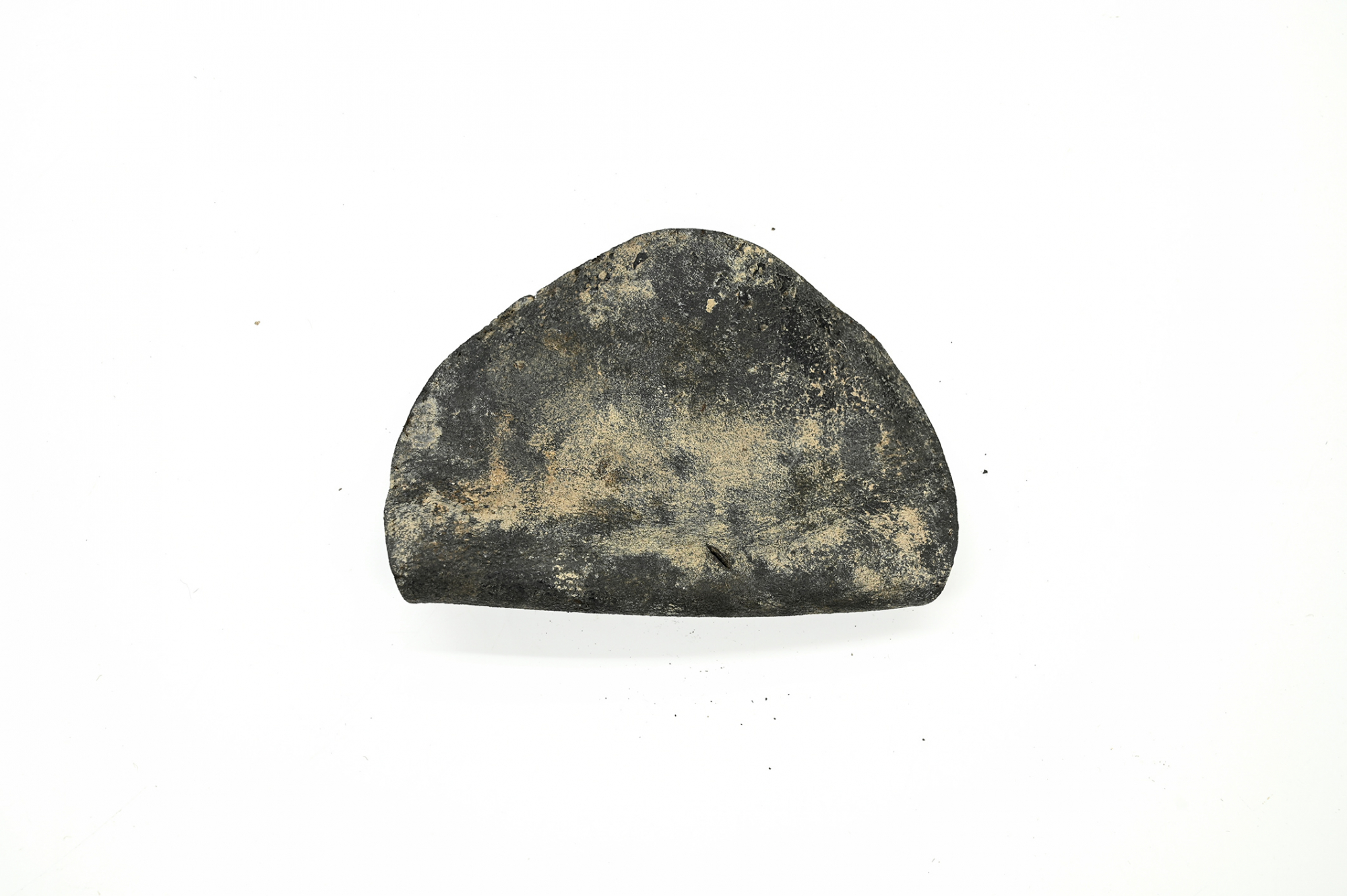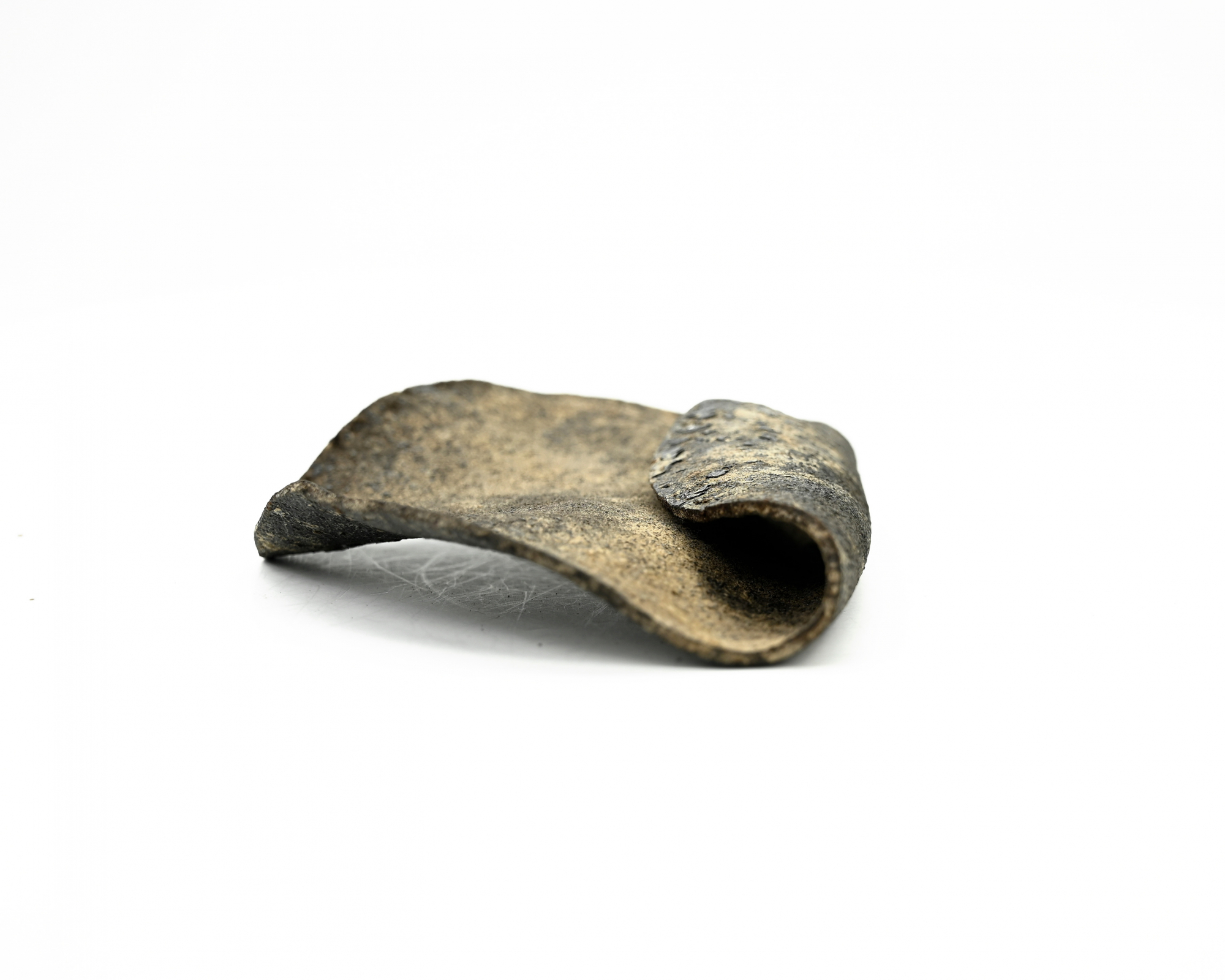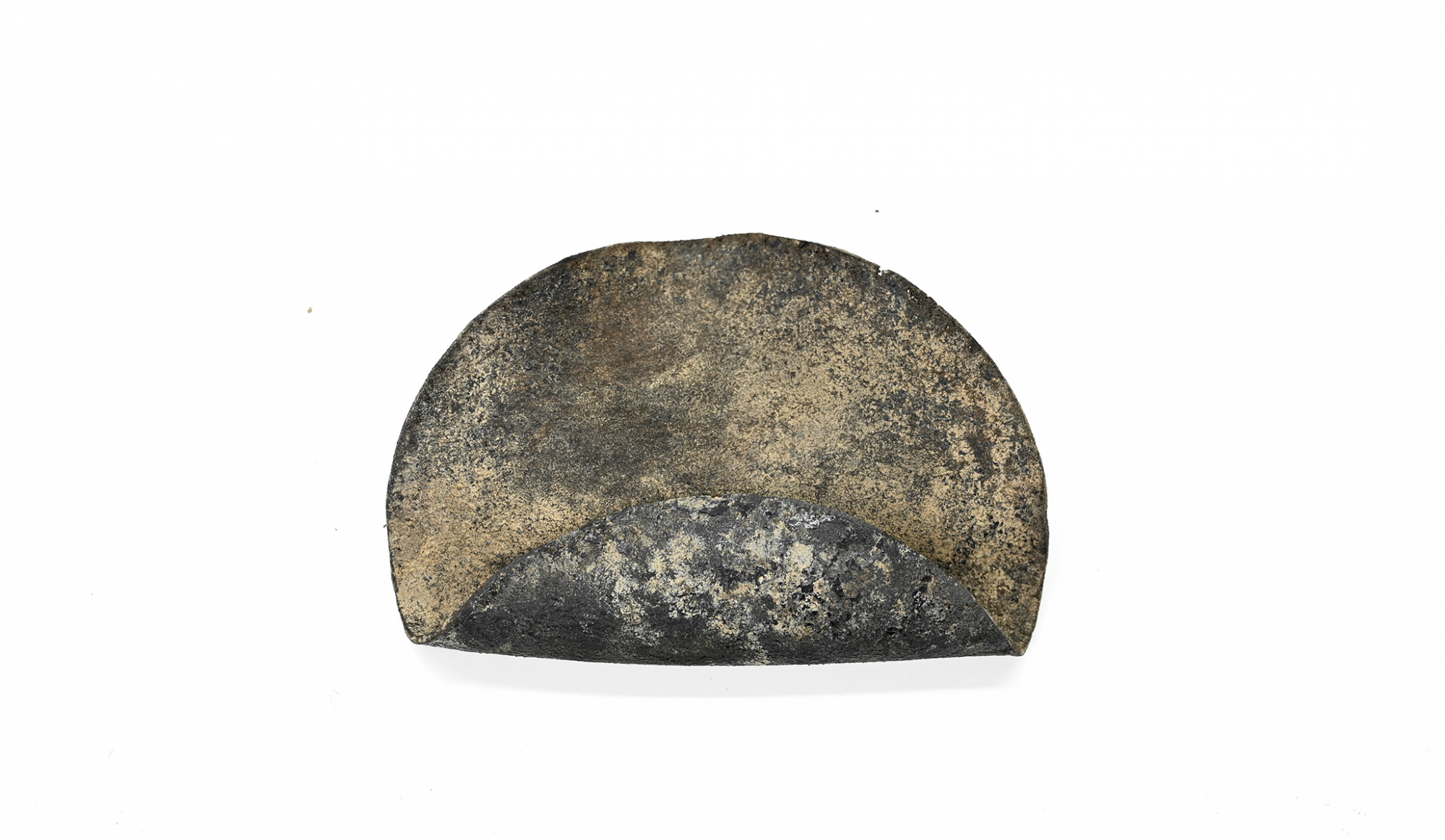site search
online catalog
KEPI OR DRESS HAT STIFFENER FROM FORT PEMBINA

Hover to zoom



$45.00
Quantity Available: 1
Item Code: 1052-476
Shipping: Determined by Method & Location of buyer
To Order:
Call 717-334-0347,
Fax 717-334-5016, or E-mail
This leather disk seems to be the stiffener from inside the top of a hat, either a kepi or dress hat. It is circular and folded over on one side, black in color with gray and white stains, and comes from the excavations at Fort Pembina, ND, which was a small, functioning army post from 1870 to 1895. Conducted on private property with the owner’s permission, excavations in wet, anaerobic soil have yielded leather gear and cloth in remarkable states of preservation documenting issue to the garrison of the various patterns of uniforms and gear used by the army in the Indian Wars, starting with Civil War surplus and progressing through newer patterns as they were adopted and available for issue. Since this is leather rather than a pasteboard construction it is most likely from a privately purchased cap. Like any other soldiers, members of the garrison had an eye for comfort and would not want to overdraw their clothing allowance if they could avoid it.
Fort Pembina was established in 1870 by troops of the 20th US Infantry and as is typical of the early Indian Wars regular army, their issue uniforms were Civil War surplus well into the 1870s. Situated in the Red River Valley in North Dakota near the Canadian border, Ft. Pembina was in operation until 1895. Trading posts existed earlier in the area as part of the fur trade, and the first U.S. military post there was temporary- manned by a detachment of Minnesota troops in 1863-1864 following the 1862 Sioux uprising. In March 1870 a new fort was established south of the Pembina River and about 200 yards west of the Red River, completed by July and named in honor of Gen. George H. Thomas. The name was changed to Fort Pembina in September and the initial garrison consisted of two companies of the 20th US Infantry. Their main purpose was to provide security for settlers worried about Sioux returning south from Canada, but the troops spent much of their time escorting boundary surveys along the Canadian border and preventing Fenian raids heading north into Canada.
The fort included enlisted barracks, officers’ quarters, guard house, ordnance storehouse, company kitchen, root house, laundress’s quarters, quarters for civilian employees, hospital and hospital servant’s house, a barn for the “hospital cow,” quartermaster and commissary offices and storehouse, stables, wagon shed, etc. The garrison reached peak strength in 1878 of 200, but the average was about 125 enlisted men and 8 officers. An October 1885 return listed 97 men, 2 field pieces, 1 mountain howitzer, 100 rifles, 19 pistols, 23 mules, and 9 wagons. By 1890 the post had just 23 men, and after an 1895 fire destroyed some 19 buildings it was decided to abandon the fort rather than rebuild, the last detachment left in September. The property was turned over to the Interior Department and later sold in 1902. [sr] [ph:m]
~~~~~~~~~~~~~~~~~~~~~~~~~~~~~~~~~~~
THIS ITEM, AS WITH ALL OTHER ITEMS AVAILABLE ON OUR WEB SITE,
MAY BE PURCHASED THROUGH OUR LAYAWAY PROGRAM.
CLICK HERE FOR OUR POLICIES AND TERMS.
THANK YOU!
Inquire About KEPI OR DRESS HAT STIFFENER FROM FORT PEMBINA
Most Popular
Historical Firearms Stolen From The National Civil War Museum In Harrisburg, Pa »
Theft From Gravesite Of Gen. John Reynolds »
Selection Of Unframed Prints By Don Troiani »
Fine Condition Brass Infantry Bugle Insignia »
Large English Bowie Knife With Sheath 1870’S – 1880’S »
Imported (Clauberg) Us Model 1860 Light Cavalry Officer's Saber »
featured item
EXTRAORDINARILY RARE AND IMPORTANT CONFEDERATE RAINS BARREL TORPEDO - 1 OF 2 KNOWN - FROM THE TEXAS MUSEUM
This is a Rains barrel torpedo that was recovered during the Civil War in Mobile Bay, AL. It was developed by Gabriel James Rains, Chief of the Confederate Torpedo Service. Gabriel Rains was born in Craven County, NC and entered West Point,… (1268-690). Learn More »


